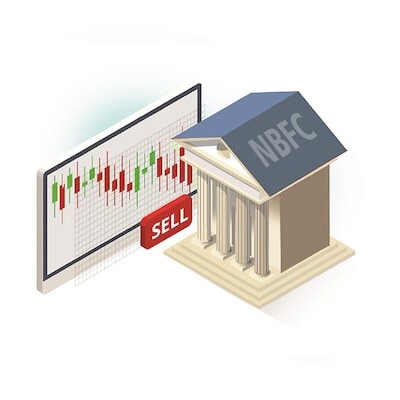ILLUSTRATION: AJAY MOHANTY
Non-banking financial companies (NBFCs) are expected to face challenges related to availability of finance, which could slow their growth compared to the strong expansion seen in the last two financial years, according to a report by ICRA.
Assets under management (AUM) growth of NBFCs is expected to moderate to 13 per cent-15 per cent in the current financial year, down from 18 per cent in the previous financial year, the report said.
A key challenge in meeting growth expectations will be securing the necessary debt financing, in addition to refinancing existing debt. The incremental debt financing required for expansion of assets under management in fiscal year 2025 (FY25) is estimated to be between Rs 5.6 trillion and Rs 6 trillion, the report said. Despite substantial demand and unmet credit needs, the risk of slower growth in NBFC assets under management could increase significantly if the tight financing conditions seen in the first quarter of the current fiscal year persist throughout the fiscal year.
The report notes that the sector’s AUM, which stood at around Rs 47 trillion in March 2024, is projected to cross Rs 50 trillion in the current financial year.
The overall credit quality of retail assets held by NBFCs, excluding housing finance companies, is expected to fall by 30-50 basis points in the current financial year. The profitability of the sector is likely to be impacted by high funding costs, increased competition from banks, slowing growth and challenges related to asset quality. The report notes that margins in the sector will decline by 25-45 basis points compared to the previous year.
Meanwhile, AM Karthik, senior vice president and co-head of the Financial Sector Ratings group at icra, noted that the sector’s best days for non-performing assets (NPAs) are likely over, with NPAs expected to rise.
ICRA noted that slower growth, coupled with portfolio ageing following rapid credit expansion in retail asset segments over the past two financial years, will start weighing on asset quality this year. Moreover, concerns over excessive leverage and rising share of unsecured loans are expected to increase credit risk, posing a greater threat to loan quality in the sector.
First published: August 21, 2024 | 17:23 IS
Disclaimer:
The information contained in this post is for general information purposes only. We make no representations or warranties of any kind, express or implied, about the completeness, accuracy, reliability, suitability or availability with respect to the website or the information, products, services, or related graphics contained on the post for any purpose.
We respect the intellectual property rights of content creators. If you are the owner of any material featured on our website and have concerns about its use, please contact us. We are committed to addressing any copyright issues promptly and will remove any material within 2 days of receiving a request from the rightful owner.

